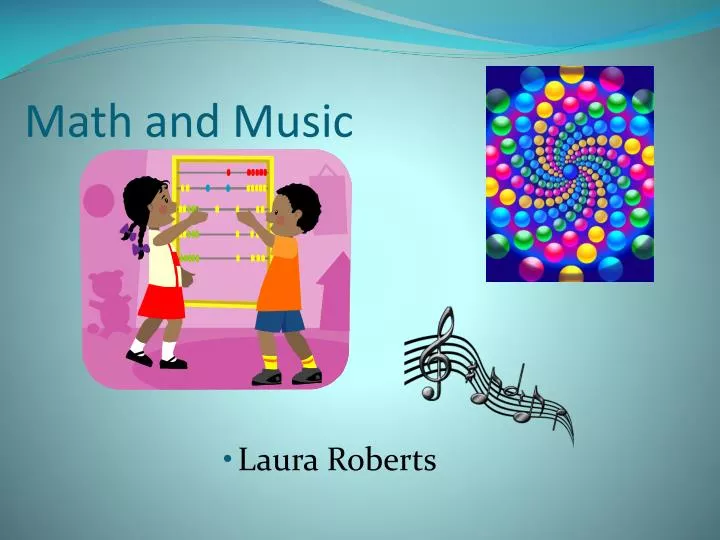

Mathematics is a branch of Harmonic Theory, all math is in fact music.

Thus there can be made no connection between music and math, since the two are one and the same. While your child is playing the instruments, she will be measuring, tapping out patterns, and counting. Music and numbers are therefore eternally linked, not due to convention or theory, but because of the very nature of sound. Make a shaker with beads in a bottle, or use two wooden spoons as rhythm sticks. Your child will be learning concepts such as matching and number patterns. Try again with other beats such as stomping and then clapping a pattern. Start with tapping out a beat and ask your child to repeat it. Following the steps supports learning sequences. While playing music and dancing, take turns with who is the leader. The counting, singing, and repetition will help build attention skills as well as math. When she is asked how many people are in the building she replies, Well, if one person enters the house it’ll be empty. A mathematician sees three people go into a building. We love "One, Two, Buckle My Shoe" or "Twinkle, Twinkle, Little Star". A statistics professor and a math professor worked together on a cookbook. This helps with vocabulary development as well. You can do this again while putting away toys or setting the table. You can have fun at home by integrating music into your family's daily life, and in turn, supporting math skills along the way! Here are five simple activities that support mathematical development:Īs you go about household tasks such as folding clothes, say: first we fold the shirts, fold the shirts and fold the shirts…then we fold the socks, fold the socks, etc. These connections to concentration, attention, focus, and learning help not only in building math skills, but also with early skills in literacy and social-emotional development. For example, how many times have you recited, "thirty days hath September, April, June, and November"? You probably learned that in elementary school, and yet you still remember it today. Musical rhythm can have a positive effect on a child's attention skills and how long they can remain engaged. Music creates an order that helps children learn the patterns important in early math such as repetition and relationships. Musical patterns, rhythm, and tempo support mathematical concepts such as sequencing, simple counting, and patterns. There is a strong body of research that highlights the connections between music and math in brain development. The children would be counting and repeating patterns as they sang "Five Little Monkeys" or "This Old Man", all of which are part of early math skills development. Don’t tell the kids though! As an educator, I loved playing music in the classroom and getting the kids moving, laughing, and learning. We don't immediately think of math when we hum a favorite tune or get up and dance to a favorite pop song, but amazingly, there are mathematical concepts in all of it.


 0 kommentar(er)
0 kommentar(er)
